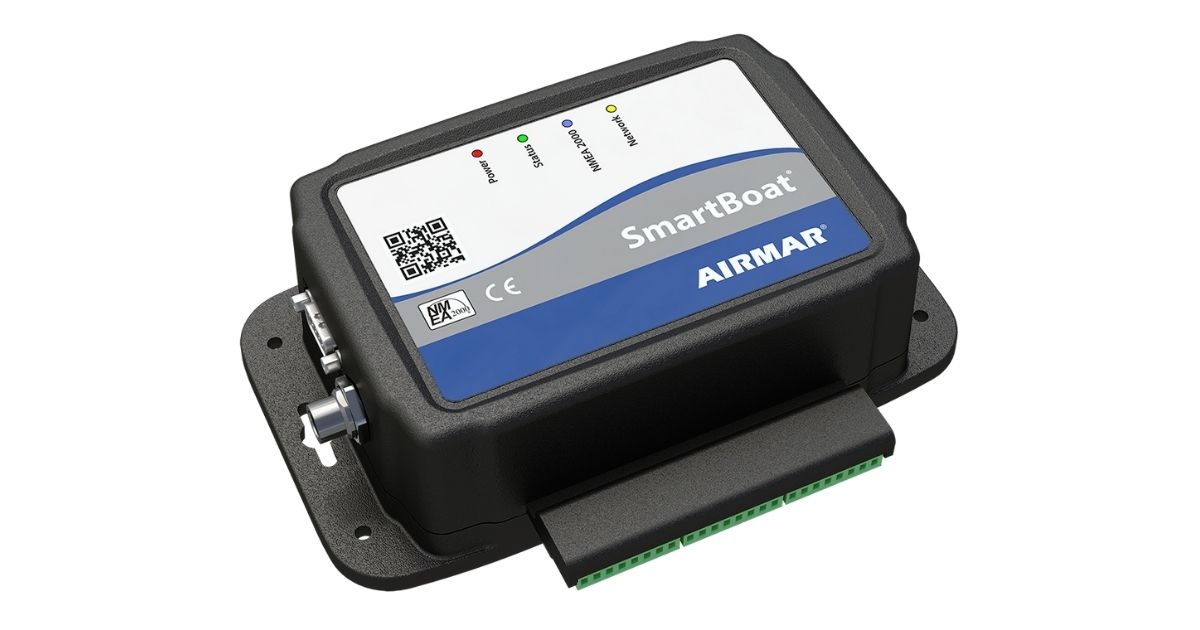AIRMAR®Technology Corporation, a world leader in ultrasonic transducers and Chirp technology, has introduced their new SmartBoat® system, a groundbreaking vessel-management solution for all marine-sensor protocols and network types.
The NMEA 2000® certified SmartBoat system offers a highly configurable sensor interface, supports a wide range of sensors and protocols, and provides remote discovery, management, programming, and wireless features. These unprecedented capabilities significantly reduce the equipment, protocol-conversion devices, cabling, complexity, and labor costs associated with conventional networking products, saving thousands on every install.
“All onboard sensors, such as switch-input, run-time, current-loop devices, thermistors, thermocouples, resistive-sender units, DC voltages, fuel-flow monitors—even engine data—can be connected to a SmartBoat module, which converts their protocols to NMEA 2000. This eliminates the need for over half of the NMEA 2000 protocol-conversion devices and cabling used in a typical installation,” states Jennifer Matsis, Airmar’s Vice President of Sales and Marketing. “By interfacing directly to sensors, there’s no need for numerous expensive single-sensor modules.”
Once the SmartBoat module is connected, the status of all connected sensors can be easily accessed. Airmar’s SmartFlex® View is a browser-based tool enabled in each module and accessible directly from any laptop, tablet, mobile device, or via Airmar’s CAST™ app. Features within SmartFlex View include SmartFlex® Alert, a comprehensive alert configuration system. Alerts can be custom defined based upon NMEA 2000 message-field values, timers, and counters, and can be combined as needed. Also, SmartFlex® Filter can be used to control PGN message traffic between the primary and secondary NMEA 2000 buses.
All models in the SmartBoat system share a common set of features, including built-in wireless networking support and browser-based configuration (SmartFlex View) and NMEA 2000 support. They can also be configured as wireless-access points, clients, or both, allowing full flexibility with other external networks on the boat. Advanced SmartBoat models support multi-network bridging and management such as multiple NMEA 2000 networks, NMEA 0183, SAE J1939 engine interfaces, and digital sensors.
“There is no question the SmartBoat system is now, by far, the easiest and most cost-effective way to connect, control, and communicate sensor data on a vessel,” says Matsis. “But the level of simplification brought to system management, plus the degree of cost savings at installation—all delivered by a single marine-electronics product—is unprecedented. I look forward to seeing the significant impact the SmartBoat system will have on this industry.”
SmartBoat modules are designed to meet the needs of marine electronics installers and boatbuilders, with features like quick-disconnect terminal blacks for prewiring, full electrical isolation of each bus, remote access through connected networks, built-in configuration and diagnostic tools, and the ability to easily back up and clone modules for duplication on the next install. All SmartBoat modules are rated IP67.


